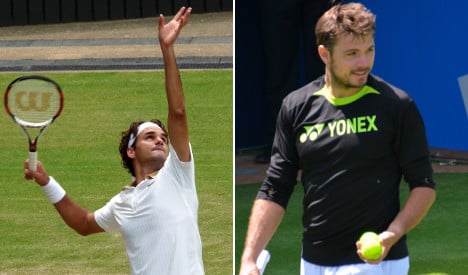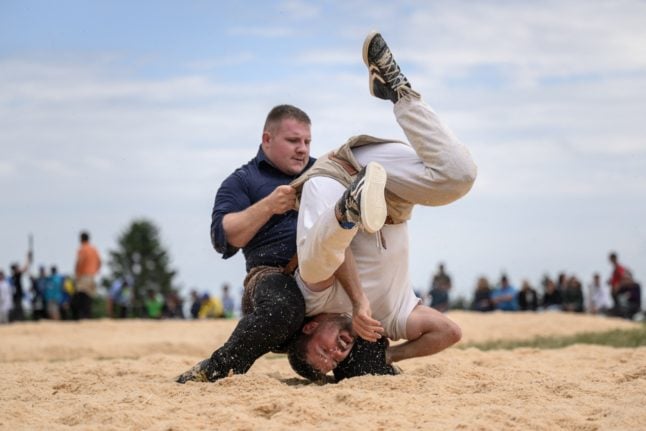Federer advanced on Wednesday to his tenth US Open semifinal, where he will face compatriot and close friend Stan Wawrinka for a spot in Sunday's final.
The 34-year-old Swiss believes napping, as well as the routine of practice and gym work, is just as crucial as he enters his 20th career clash against his compatriot.
He is so fond of sleep that Federer will look to get in as much as ten hours a day before Friday's semi-final, where the winner will face either world number one Novak Djokovic or defending champion Marin Cilic in Sunday's championship match.
“Sleeping has become quite important,” said Federer, the father of two sets of twins.
“I make sure I sleep enough, as well. Like when I went to bed after the John Isner match (in the fourth round) it got quite late and I couldn't sleep quite as much as I wanted to.
“Because I believe it's really the sleep that gives you energy again down the road. That's why the next two days are very important for me in terms of sleeping.”
If the approach for such a high-stakes clash seems risky, then Federer is showing no signs of nerves as he moves two wins from an 18th major and his first in more than three years.
He has reached the semifinals without dropping a set and has been broken just twice.
On Wednesday, he blitzed French 12th seed Richard Gasquet in just 87 minutes, firing 50 winners, 16 aces and facing just a single break point.
Furthermore, he has a 16-3 record against Wawrinka.
He may have lost their most recent clash in the French Open quarterfinals as Wawrinka swept to the title, but Federer's three defeats have all come on clay.
“I think a lot comes through practice for Stan, because he's worked very hard throughout his career,” said Federer in praise of his Davis Cup winning teammate.
“It took him a while to figure out exactly what his possibilities were. I don't think he was a guy who always had enough confidence. I always thought he was a better player than he actually was, but somehow something was holding him back maybe.
“I think only once when he really started to break through and he had some big wins.”
Wawrinka believes he is now the equal of Federer, something he did not quite believe before he won his first major at the 2014 Australian Open.
“I think now we are both nervous when we enter the court. Before it was only me. I was nervous because I knew I wasn't at his level,” he said.
“Now I think we can see that he was also nervous every time we play each other the past few years. That's a big difference.”
Wawrinka will be playing in his second semifinal after also making the last four in 2013.
Djokovic takes a 13-0 record over Cilic into his semifinal as he attempts to make the final for the fifth time in six years and sixth in total.
In a rivalry stretching back seven years, the two men have met four times at the Grand Slams but just once at the US Open when Djokovic won in four sets in 2008.
The Serb also swept past the Croatian in straight sets in the Wimbledon quarterfinals this year on his way to a third All England Club title.
Djokovic had cruised through his first three rounds but then dropped a set apiece to Spanish rivals Roberto Bautista Agut and Feliciano Lopez.
Victory over serve-and-volleyer Lopez was his 55th match win in New York.
But despite his stranglehold over Cilic, the top seed insists that his opponent, on a 12-match win streak at the tournament, remains the dangerman especially with a serve which has yielded 111 aces.
“That serve gets him out of trouble. I know him very well. I have played with him many, many times. We are great friends. Great guy,” said the Serb.
Cilic has endured a roller-coaster ride in his title defence as he looks to become the first back-to-back champion since Federer in 2008.
His five-set wins over Mikhail Kukushkin in the third round and Jo-Wilfried Tsonga in the quarter-finals are two of the three longest matches at the tournament this year.
His four hour and 11 minutes battle with Kukushkin was just seven minutes short of the time it took Kevin Anderson to knock out third seed and 2012 champion Andy Murray in the round of 16.
“I came to the tournament knowing that I can play well here, that I just need few matches to get into the rhythm, and that's what happened,” said the ninth seed.
Cilic has won just one title – in Moscow in October – since his breakthrough in New York 12 months ago but has yet to add to that in 2015.



 Please whitelist us to continue reading.
Please whitelist us to continue reading.
Member comments